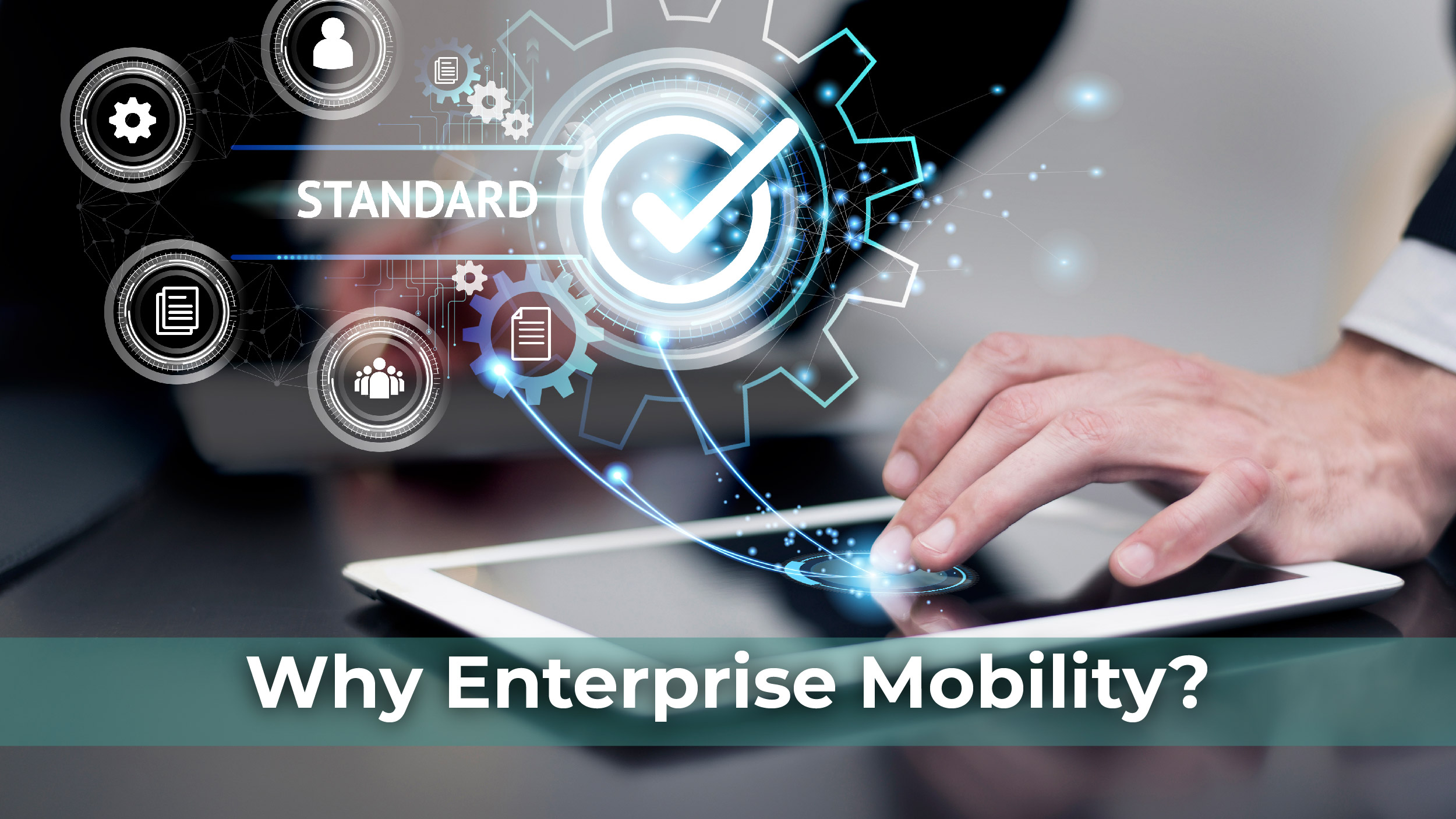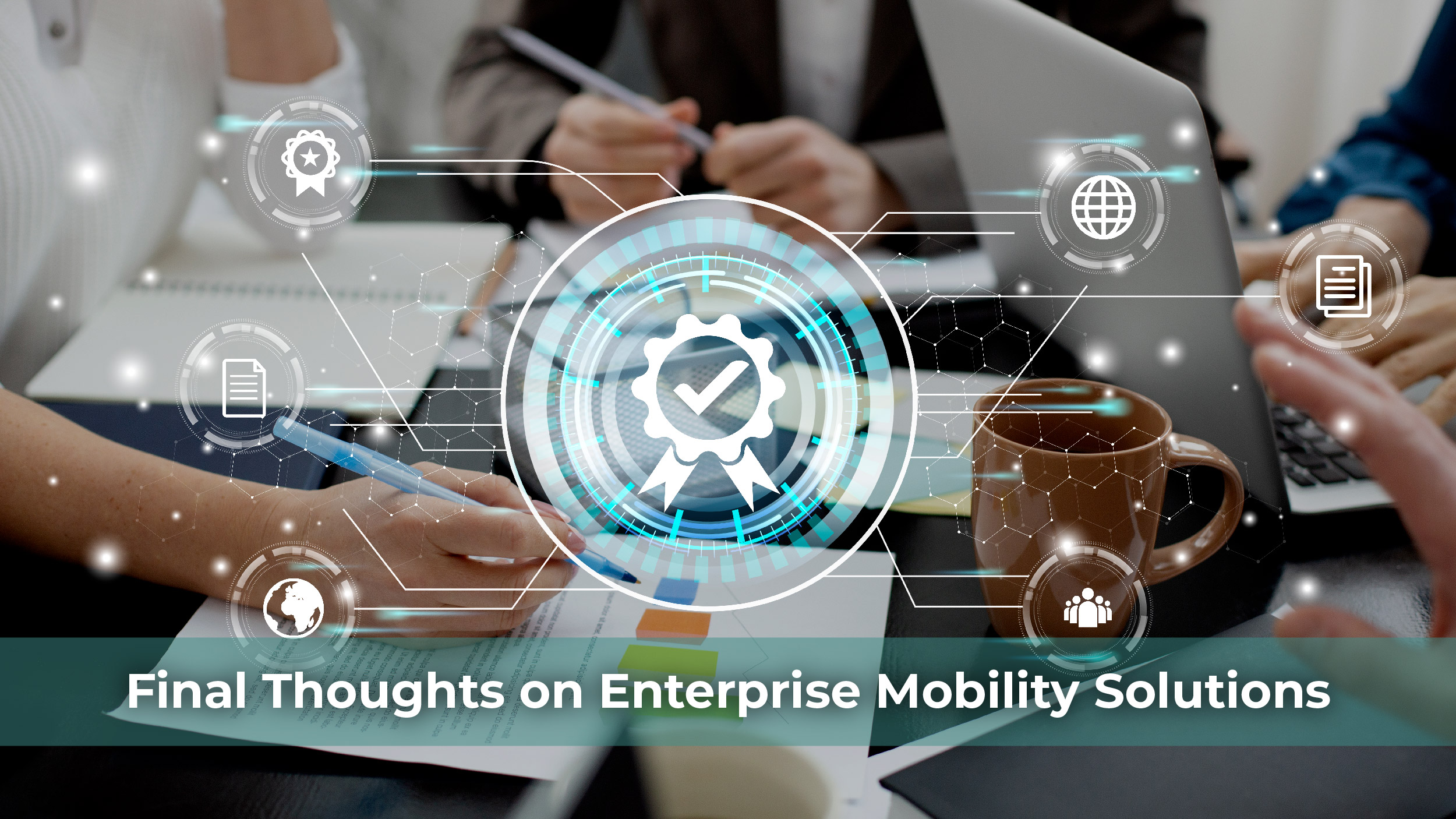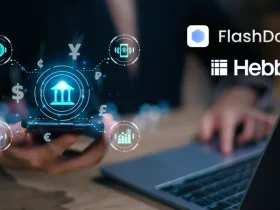Many times, we’ve encountered situations where we couldn’t pinpoint the precise word for something, but we all had a clear understanding of its meaning. Well, enterprise mobility is one such word. A hint: it has something to do with remote working. That being said, let’s get to the root of it!
What is Enterprise Mobility?
Enterprise or business mobility, refers to the increasing trend of businesses offering remote working options and allowing employees to use their personal laptops and mobile devices for work purposes.
This also involves utilizing cloud technology for data access. The concept of enterprise mobility acknowledges the need for greater flexibility in response to the shift away from the traditional central office setup. Now the remote working hint makes sense, doesn’t it?
Why Enterprise Mobility?
 Enterprise mobility offers the potential for increased productivity and reduced expenses. However, in order to harness these benefits, businesses must establish a clear acceptable use policy and implement a management plan that prioritizes security and governance.
Enterprise mobility offers the potential for increased productivity and reduced expenses. However, in order to harness these benefits, businesses must establish a clear acceptable use policy and implement a management plan that prioritizes security and governance.
According to a survey conducted by ConnectSolutions, 77% of individuals who work remotely at least a few times per month reported increased productivity. Out of that percentage, 30% stated they were able to complete more work in less time and 24% mentioned being able to accomplish the same amount of work within a shorter timeframe.
Enterprise mobility management (EMM) encompasses the strategies and individuals responsible for facilitating and securing enterprise mobility. It involves safeguarding remote and mobile devices, as well as equipping employees with the necessary devices and support to enable mobility. EMM also aids IT administrators in managing access at the device level, regulating access based on application, file, employee role, location, and other relevant factors. By implementing EMM practices, enterprises can expand access to digital assets while retaining proprietary control.
Understanding Enterprise Mobility Solutions and Security
The advent of the BYOD (Bring Your Own Device) trend sparked concerns within IT departments. Employees were circumventing existing security measures and using unmanaged devices to access company networks, applications, and data.
In the early days of enterprise mobility, the go-to security solution was Mobile Device Management (MDM) software. This technology empowered IT to remotely wipe devices, enforce passcodes, manage blocklists and allowlists, and exert control over what users could do on their smartphones and tablets.
Faced with employee resistance to granting IT such extensive control over their personal devices, organizations turned to more refined enterprise mobility security measures. These measures included mobile application management (MAM) and identity and access management.
MAM allowed IT to control and secure specific apps without managing the entire device. Some MAM technologies employ application wrapping, which is directly integrated with an app’s code to provide management capabilities. Others created secure containers for groups of apps, keeping them and their data isolated from the rest of the device. Additionally, certain MAM solutions offered application programming interfaces (APIs) directly integrated into Android and Apple iOS.
Identity and access management simplified the process for users to log in to various corporate applications, spanning desktop, mobile, and cloud-based apps, using a single set of credentials. This streamlined approach aimed to simplify the management of multiple user accounts per employee, reducing potential security risks.
MDM, MAM, and identity and access management functionalities are now typically bundled together as part of comprehensive business mobility management suites.
What are the Different Types of Enterprise Mobility Management Solutions?
Enterprise mobility management solutions have become a broad category that includes various companies. It’s important to understand that not all these solutions will be suitable for every business.
It is crucial to carefully evaluate each enterprise mobility service before making a decision. Here are some common enterprise mobility solutions that you would typically come across:
- Device management
- App management
- Identity management
- Information management
- Content management
- Expense management
While there may be some overlap among these solutions, it is important to examine each one individually for clarity. A comprehensive enterprise mobile app development strategy should be one that considers and addresses all of these key areas.
Now let’s decode each of these solutions briefly.
- Device Management: This involves remotely controlling and securing mobile devices used for work, including personal smartphones, tablets, and laptops. It ensures data encryption, enforces security standards, and offers the capability to wipe a device clean if it’s lost or stolen. This is essential for organizations concerned about the security of mobile devices.
- App Management: It focuses on managing software rather than hardware, particularly for employees who bring their own devices to work. It allows organizations to control app security and remotely update, support, or delete apps on mobile devices. It offers a high level of security without wiping the entire device, making it suitable for employees using their personal devices for work.
- Identity Management: Identity management ensures that only authorized users and devices access corporate data, applications, and processes. It can involve app code signatures, device certificates, authentication, and single sign-on, granting department-level credentials to ensure consistent access to information and apps for team members.
- Information Management: This is closely tied to device and app management and focuses on remote databases, especially when using cloud-based database tools. It ensures secure data access across multiple devices and is typically addressed within broader mobility solutions.
- Content Management: Content management is similar to information management but focuses on controlling content access, push, and security, rather than database access. It helps enforce authentication policies and integrates with enterprise tools, often included in the app and device management services.
- Expense Management: It is aimed at controlling and tracking costs related to mobile devices, whether provided by the organization or through stipends for employees using their own devices. It offers insights into mobile service usage, aiding in procurement efforts and mobile device policy development.
Final Thoughts on Enterprise Mobility Solutions
 In today’s business world, mobility plays a crucial role in maintaining agility and competitiveness. However, organizations often express significant concerns regarding security.
In today’s business world, mobility plays a crucial role in maintaining agility and competitiveness. However, organizations often express significant concerns regarding security.
Enterprise mobility solutions encompass a wide range of services that enhance employee mobility and safeguard an organization’s data and processes. Navigating the vast landscape of business mobility solutions can be a daunting task when trying to find the perfect fit for your organization. In such situations, businesses can find advantages in turning to well-established companies that provide enterprise mobility services, including but not limited to Koombea, Microsoft, and VMware.

































